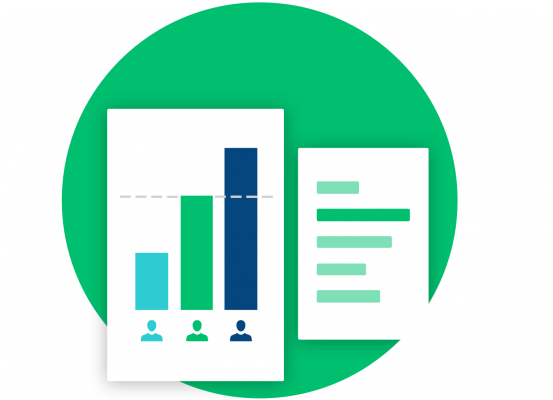Get the context you need to make better decisions
Use SurveyMonkey Benchmarks to see where you stand compared to a global audience or others in your industry.

Get a deeper understanding of your data
SurveyMonkey offers benchmarks as an easy way to compare survey results within key categories such as customer satisfaction, employee engagement, and more.
- Easily interpret your survey results
- Assess performance metrics accurately
- Identify best practices in your industry
- Keep tabs on your competition
- Set strategic goals for your organization
How SurveyMonkey Benchmarks work
When SurveyMonkey customers use our expert-certified survey templates and questions from our Question Bank, our platform anonymizes and aggregates the responses to each question, creating benchmarks to compare your results against.
To make sure our benchmarks are meaningful and relevant, we’ll only publish them for a given question if it meets the following:
- We’ve received responses from 30+ organizations
- The response data is refreshed quarterly
- Any expert-certified questions remain unaltered
- Organizations haven’t opted out of benchmarks
- The question isn’t open-ended or a comment/text box
Benchmark data is available for select Question Bank questions in English only.
See our Privacy Policy for questions on how we handle personal information and data.
Try one of our benchmarkable surveys
Make your customers happy
After you use our customer satisfaction template, see how your results stack up against your biggest competitors.
The insights you gain will help you target your improvements—and keep customers loyal to your brand.
Why is benchmarking important?
Learn why benchmarks are necessary for setting goals.
